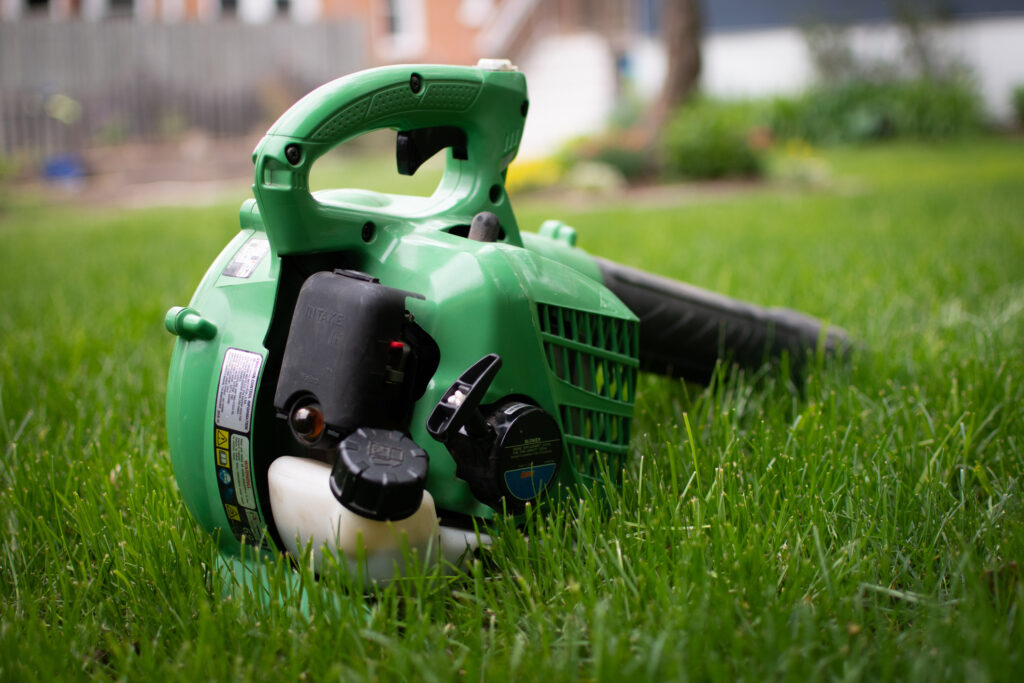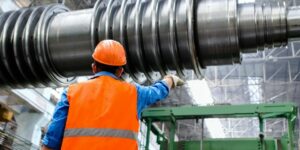Balancing emission reduction with cost management is crucial in spark ignition engine manufacturing. As global environmental regulations become increasingly stringent, manufacturers are compelled to adopt innovative solutions that meet air quality standards and align with budget constraints.
Catalysts are pivotal in this equation, minimizing harmful exhaust emissions from spark ignition engines commonly found in vehicles, lawn and garden equipment, and handheld power tools.
This blog explores cost-effective catalyst solutions specifically designed for spark ignition engines, offering manufacturers insights into balancing economic efficiency with environmental responsibility.
Join us as we navigate the complexities of cutting costs and emissions, ensuring spark ignition engine manufacturers can achieve optimal performance while adhering to environmental mandates.
Understanding Spark-Ignited Engine Emission Control

Spark ignition (SI) engines, known for igniting air-fuel mixtures with sparks from an ignition system, are widely used due to their efficiency and reliability. Found in a variety of applications from automobiles to handheld power tools, these engines face significant environmental scrutiny.
The pollutants they emit, such as nitrogen oxides (NOx), carbon monoxide (CO), and volatile organic compounds (VOCs), necessitate advanced emission control strategies.
Common Pollutants In Heavy-Duty Spark Ignition Engine Emissions
While spark ignition engines are celebrated for their operational efficiency, they are not without environmental impacts.
The combustion process inherent to these engines typically emits several key pollutants.
- Nitrogen Oxides (NOx): These compounds are formed when nitrogen in the air reacts with oxygen at the high temperatures created by combustion. NOx is a major contributor to smog and acid rain and can significantly impact respiratory health.
- Carbon Monoxide (CO): An odorless, colorless gas, CO is produced from the incomplete combustion of fuel and is extremely poisonous if inhaled.
- Volatile Organic Compounds (VOCs): These organic chemicals vaporize at room temperature and react with nitrogen oxides in the presence of sunlight to form ground-level ozone, a primary ingredient in urban smog.
Challenges of Small Engine Emission Control

Manufacturers must continually innovate and adjust their designs to meet tighter and tighter emission standards without sacrificing performance or economic viability.
This requires a careful balance of engineering, innovation, and strategic planning to overcome regulatory requirements and the inherent technical hurdles of emission reduction.
Regulatory Pressures and Environmental Standards
The drive to improve emission controls in spark ignition engines is largely propelled by tightening environmental regulations globally.
Governments and international bodies continuously update standards to reduce the environmental footprint of automotive and mechanical equipment.
These regulations aim to lower the limits of permissible emissions from engines, pushing manufacturers to adopt cleaner, more efficient technologies.
Technical Challenges
Adhering to stringent environmental standards introduces several technical challenges, including balancing emission reductions with engine performance.
Moreover, integrating advanced emission control technologies often involves significant costs, which manufacturers must manage to avoid impacting the final product price.”
- Balancing Performance with Emissions: Reducing emissions often requires engine design or operation changes that can affect performance. For instance, modifications aimed at reducing NOx emissions can lead to increased fuel consumption or reduced engine power.
- Cost-Effectiveness: Incorporating advanced emission control technologies can be costly. Manufacturers must develop solutions that meet regulatory requirements and do so without exorbitant costs that could inflate the end price of vehicles and equipment.
- Durability and Reliability: Emission control systems must be as durable and reliable as the engines. They should withstand various operational conditions without frequent maintenance or replacement.
The Role of Catalysts in Emission Control

Catalysts are integral components in the emission control systems of spark ignition engines, playing a pivotal role in minimizing environmental impact while maintaining engine efficiency.
They facilitate chemical reactions that convert harmful exhaust gases into harmless substances without being consumed in the process.
How They Work
In spark ignition engines, catalysts are typically housed within a catalytic converter, a device that is part of the exhaust system. The basic operation involves:
- Conversion: As exhaust gases pass through the catalytic converter, they contact catalyst materials coated on a ceramic or metallic honeycomb substrate. The catalysts promote chemical reactions that convert pollutants such as NOx, CO, and VOCs into nitrogen, carbon dioxide, and water vapor—substances that are significantly less harmful to the environment.
- Reduction and Oxidation: Catalysts facilitate two main types of reactions: reduction (which reduces NOx emissions) and oxidation (which oxidizes CO and hydrocarbons to form CO₂ and water). This dual-functionality is crucial for meeting comprehensive emission standards.
Types of Catalysts for Spark Ignition Engines
Catalysts used in spark ignition engines are primarily tailored to address the specific emissions produced by these engines. The types include:
- Three-Way Catalysts (TWC): These are the most common types used in gasoline-powered vehicles and equipment. They are called ‘three-way’ because they simultaneously reduce NOx, oxidize CO, and oxidize unburnt hydrocarbons. Three way catalysts can be used when the air to fuel ratio of the engine is tuned to be stoichiometric.
- Oxidation Catalysts: Primarily used in some types of engines where the focus is on reducing CO and hydrocarbons rather than NOx. Oxidation catalysts are used when the engine is tuned “lean” in order to limit NOx production in the engine.
These catalysts are designed to perform under the high-temperature conditions typical of spark ignition engines, ensuring durability and sustained activity over the engine’s life.
Catalysts in Various Spark Ignited Engines

Automobile Engines
- Catalyst System: Advanced Three-Way Catalyst (TWC) Systems
- Features: These systems are designed to handle high exhaust flow rates and prolonged operational periods, which are typical in automotive applications. Most automotive catalysts are supported on ceramic monoliths, while some metal monoliths are used in some vehicles, particularly for “Close coupled catalysts” that are located right at the engine manifold.
- Emission Challenges: Automobile engines face challenges such as adapting to varied driving conditions that can significantly affect emissions output. The advanced TWC systems are essential in managing these complex emissions effectively.
Lawn & Garden Equipment Emissions
- Catalyst System: Scaled-down TWC or Specialized Oxidation Catalysts
- Features: These catalysts are tailored for smaller engines, accounting for the varied operational cycles common in lawn and garden equipment. Typical catalyst substrates used are metal or ceramic monoliths, and wire mesh.
- Emission Challenges: Emissions from lawn and garden equipment require control solutions that are both flexible and robust, capable of handling sporadic use typical of devices like lawnmowers and garden tractors. The scaled-down systems ensure that emissions are managed efficiently even with intermittent usage.
Handheld Power Equipment Emissions Control
- Catalyst System: Compact Catalysts for hand held engine emissions
- Features: Specifically designed for compactness, these catalysts suit the intermittent high-intensity use typical of handheld power tools like leaf blowers. Typical catalyst substrates used are metal or ceramic monoliths, and wire mesh.
- Emission Challenges: Handheld power tools demand compact emission control solutions that can effectively reduce emissions during peak usage periods. These tools, including leaf blowers, benefit from catalysts that significantly reduce emissions despite their small size and intermittent operation.
Cost-Effective Strategies for Catalyst Implementation

While essential for meeting emission standards, implementing catalysts in spark ignition engines can significantly impact a manufacturer’s bottom line.
To mitigate these costs without compromising on performance, manufacturers can adopt several strategic approaches that enhance catalyst implementation’s efficiency and cost-effectiveness
Bulk Purchasing
For large manufacturers, bulk purchasing catalysts presents a viable strategy to reduce costs.
Buying in large quantities typically allows for:
- Reduced Per-Unit Cost: Economies of scale can be realized when ordering larger quantities, as suppliers may offer discounts for bulk purchases.
- Inventory Management Efficiency: Maintaining a steady supply of catalysts reduces the risk of production delays associated with waiting for new shipments, thus optimizing production flow.
- Negotiation Leverage: Larger orders give manufacturers more leverage to negotiate favorable terms with suppliers, including pricing, delivery schedules, and payment terms.
Long-Term Partnerships with Suppliers
Building long-term relationships with catalyst suppliers can yield substantial benefits beyond mere transactional exchanges:
- Customized Solutions: Suppliers are more likely to invest in developing customized catalyst solutions that specifically meet the unique needs of a long-term partner.
- Cost-out Engineering: Working with suppliers to continuously improve and lower the cost of catalyst solutions
- Priority Service: Long-term clients often receive priority during high-demand periods and may also benefit from dedicated support for routine inquiries and troubleshooting.
- Stable Pricing: Partnerships can lead to agreements that stabilize pricing over time, protecting manufacturers from sudden market fluctuations that could affect catalyst costs.
Technological Innovations
Recent advancements in catalyst technology not only enhance performance but also contribute to cost reduction.
- Improved Catalyst Lifespan: Developments in catalyst composition and manufacturing techniques have led to products that retain their effectiveness longer, reducing the frequency of replacements.
- Enhanced Activity: Innovations that increase the catalytic activity mean that smaller quantities of catalyst can achieve the same emission control levels, lowering the amount of material needed.
Criteria for Selecting a Catalyst Supplier
Cost Effectiveness
Look for suppliers who offer competitive pricing without compromising on quality. Consider total cost of ownership, which includes not just the purchase price but also the operational and replacement costs over the catalyst’s lifespan.
Evaluate suppliers who offer discounts for bulk purchases, which can significantly reduce long-term costs.
Reliability
Ensure the supplier has robust quality control processes in place to provide consistently high-performance catalysts. Choose suppliers with reliable supply chains that guarantee steady and timely deliveries to avoid production disruptions.
Assess the level of support offered post-purchase, including availability of technical assistance and customer service.
Technological Capability
Suppliers who can tailor catalysts to specific engine designs or operational conditions add value by optimizing performance and emissions reduction.
Consider suppliers willing to collaborate on developing custom solutions. Such partnerships can lead to innovations that specifically address the manufacturer’s unique challenges.
Regulatory Expertise
A deep understanding of global and local emission regulations is crucial. Suppliers should not only comply with current standards but also anticipate changes in legislation.
Suppliers knowledgeable about the regulatory landscape can help manufacturers navigate complex compliance issues, ensuring that their engines meet all legal requirements for emissions.
Adaptability
The ability to adapt is invaluable in an industry where technological and regulatory demands are constantly evolving. Suppliers who offer flexible, scalable solutions can help manufacturers adjust more easily to new challenges.
Consult with Leaders in Small Engine Emission Control Technologies

Looking for innovative solutions for spark ignition engine emissions? Our team is dedicated to providing state-of-the-art catalyst technologies that meet regulatory requirements and optimize performance and cost-effectiveness.
We can help you navigate the complexities of emission control with solutions tailored to your specific needs. Schedule a consultation or system audit to identify potential improvements and cost-saving opportunities in your current emission control strategies.
Recent Posts
Manufacturing Compliance: Monitor and Reduce VOC Emissions Effectively
As companies strive to meet environmental standards, VOC (Volatile Organic Compounds) abatement is a critical focus area, particularly for the manufacturing industry. Staying compliant with local and national regulations is…
Read MoreUnderstanding Catalyst Deactivation: How Characterization Can Identify the Root Cause
AbstractCatalyst deactivation is a common challenge in many catalytic processes, but by identifying the root causes, taking appropriate corrective actions, and utilizing advanced characterization techniques, it is possible to maintain…
Read MoreChallenges in Catalyst Regeneration and How to Overcome Them
Learn the techniques for effective catalyst regeneration and how it can optimize your operations. Read now to enhance your industrial processes!
Read More


